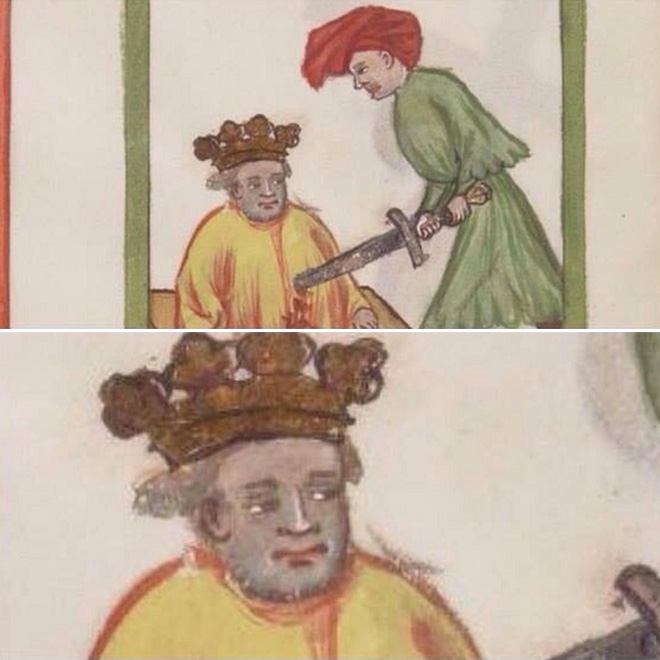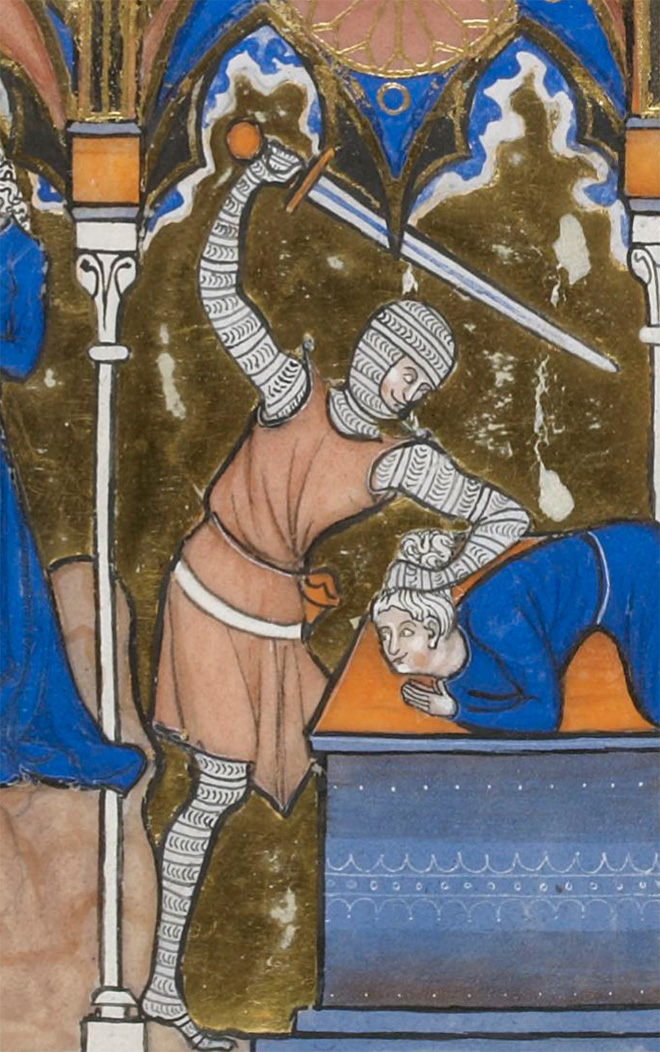
With the current generation of phones and powerful technology, it’s often easy to forget just how difficult it used to be to make some decent art way back when. During medieval times, when there wasn’t such an incredible outpouring of artistic invention, people just cobbled together the works they could to make something reasonably passable. And as artists usually do, they took inspiration from their world events.
Back in the medieval era, there was a lot of violence and a lot of death. We think that the modern world is violent, but honestly, we live in the safest and most eloquent time in the history of mankind. Back then, everyone was stabbing everyone else with swords, nails, daggers, whatever they could find, and that’s what the artists of the medieval era decided to draw. And it’s honestly pretty comical, considering they didn’t exactly have fearful expressions down.

ArtHistory covered some important history of art;
The medieval period of art history spans from the fall of the Roman Empire in 300 AD to the beginning of the Renaissance in 1400 AD. In the Middle Ages, art evolves as humans continue addressing the traditional and the new, including Biblical subjects, Christian dogma, and Classical mythology. This article introduces a few concepts of three periods—Early Christian, Romanesque, and Gothic.




During the Early Middle Ages, the Catholic Church financed many projects, and the oldest examples of Christian art survive in the Roman catacombs, or burial crypts beneath the city. By 350 AD, the Church had two power centers, Rome in the West and Constantinople (the capital of the Byzantine Empire) in the East. Medieval artists decorated churches and works for public appreciation using classical themes. For example, Roman mosaics made of small stone cubes called tesserae offered Christian scenery.







In about 350 AD, Rome’s Santa Costanza, a mausoleum built for Constantine’s daughter, included a vault decorated with mosaics. Nearby, in Santa Maria Maggiore, the mosaic called Melchizedek Offering Bread and Wine to Abraham was constructed 80 years later. Early Christian mosaics used muted colors like classical mosaics, but in the fourth century, mosaicists moved to brighter colors and patterns.






At the beginning of the eleventh century, Romanesque architecture symbolized the growing wealth of European cities and the power of Church monasteries. For example, Romanesque buildings, especially monasteries and churches, were marked by semi-circular arches, thick stone walls, and stable construction. In 1070 or 1077 AD, St. Sernin, located in Toulouse, France, was built with a stone barrel vault ceiling. St. Sernin is remembered as a model of the Romanesque “pilgrimage church.”



These pictures are perfect representations of the world falling apart and you just being okay with it. Do you agree?